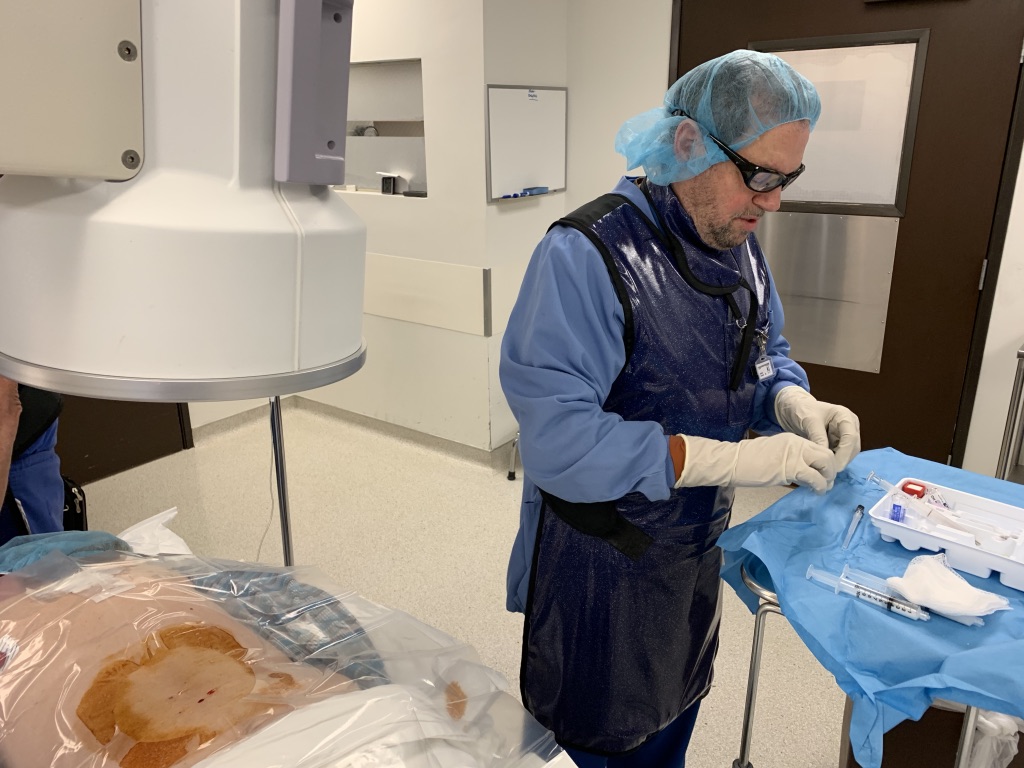EPIDURAL BLOCKS FOR PAIN MANAGEMENT
Epidural steroid injections (ESI) are minimally invasive procedures that can help relieve pain and numbness occurring in the neck, arm, back, and Legs. These symptoms are usually associated with a herniated disc at the spine. Often the pain from the back extends down one or both legs (sciatica). The injections deliver a steroid (cortisone) preparation into the particular are of inflammation. All procedures are done under fluoroscopy (a moving x-ray picture). The steroid (Depo Medrol, Kenalog) is delivered into the epidural space (Translaminar) or around the existing nerve root (Transforaminal) to relieve the pain and numbness. This reduces the inflammation of these nerves which is often the source of the pain. Spinal nerves can become inflamed due to irritation resulting from a damaged herniated disc or from contact with a bone spur. Depending on which part of the spine the inflamed nerves are located in, pain or numbness may be experienced in different areas of the body.
CERVICAL EPIDURALS
A cervical epidural injection is performed at the neck region. An anti-inflammatory medication (steroid) is placed in the epidural space or nerve root at the injured area. Cervical herniated discs can produce neck pain, shoulder pain, and pain and numbness in the upper extremities extending to the hands
LUMBAR EPIDURALS
A lumbar epidural injection is performed at the lower back. An anti-inflammatory medication (steroid) is placed in the epidural space (Translaminar) or the nerve roots exiting the space (Transforaminal). Lumbar herniated discs can produce low back pain, hip pain, buttock pain, groin pain, and leg pain with or without numbness (Sciatica).
THORACIC EPIDURALS
A thoracic epidural injection is performed at the upper portion of the back at the chest level. An anti-inflammatory medication (steroid) is placed in the epidural space. Thoracic herniated discs can produce upper back pain, pain along the ribs, numbness at the upper back, and rarely abdominal pain.
HOW ARE THESE PROCEDURES PERFORMED
All procedures are performed at a certified outpatient surgery center or hospital setting. In most cases we use sedation techniques and use an Anesthesiologist. Patients should have nothing by mouth including water for at least 6 hours prior to the procedure. Regular medications (blood pressure etc.) can be taken with a sip of water. You should not take any pain medications or sedatives prior to the procedure. You will need a ride home and you should not drive yourself for at least 8 hrs after discharge. You may return to normal activities the following day.
WHO SHOULD NOT HAVE THESE PROCEDURES
If you are on blood thinning medications (e.g. Coumadin, Plavix), or if you have an active infection or fever, you should notify the doctor immediately. The procedure can be performed after a period of time when either blood thinning medication has been stopped, or when no active infection or fever is present. If you are pregnant, you should not have these procedures.




